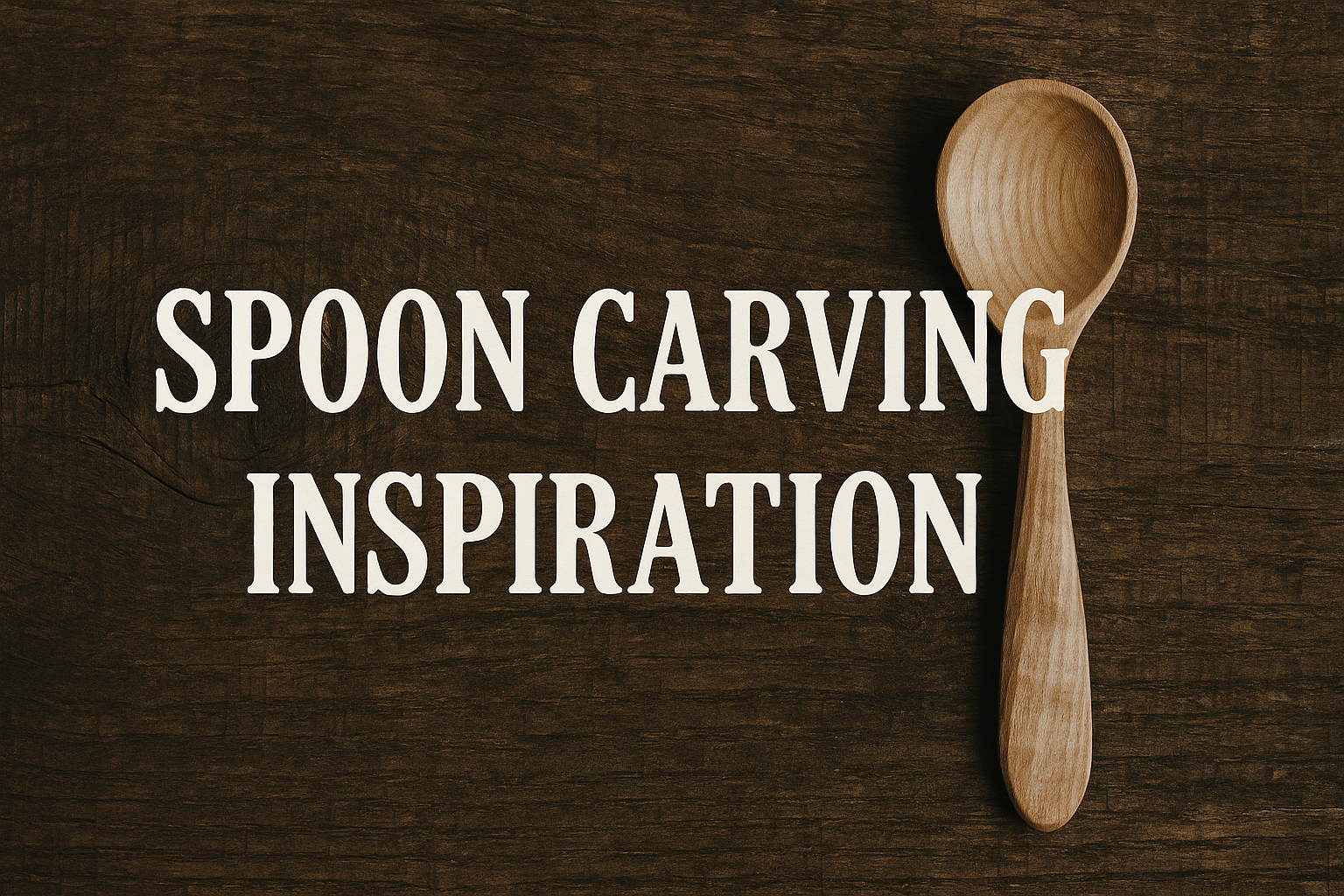Hand-carved spoons are one of the oldest and most personal woodworking projects. They are practical, decorative, and endlessly creative. A carved spoon can be a functional tool for the kitchen, a symbolic gift, or even a piece of art to display. What makes spoon carving so appealing is the blend of tradition, utility, and imagination. With just a block of wood and a few sharp tools, you can create an object that carries both beauty and story.
In this article, we’ll explore unique spoon carving designs, modern inspirations, the best wood choices, carving techniques, and tips for finishing and maintaining your creations
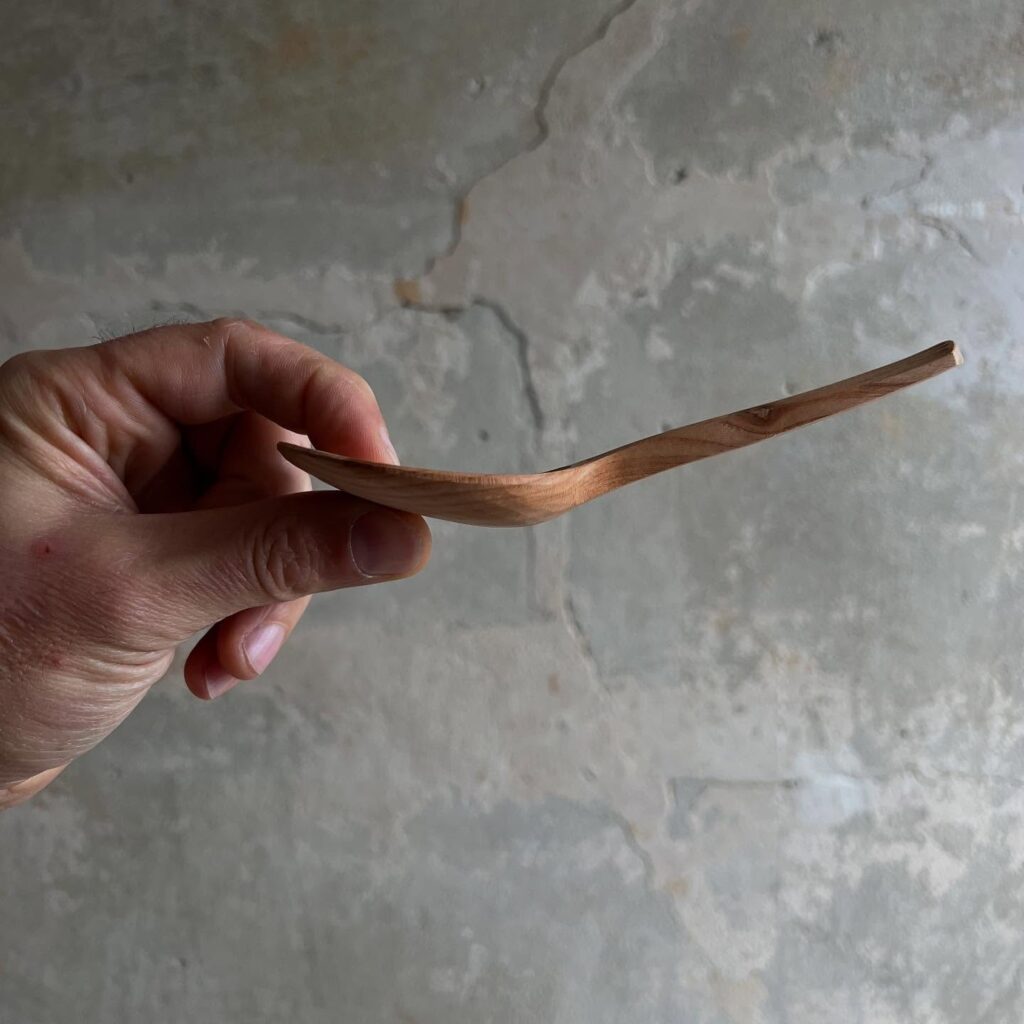
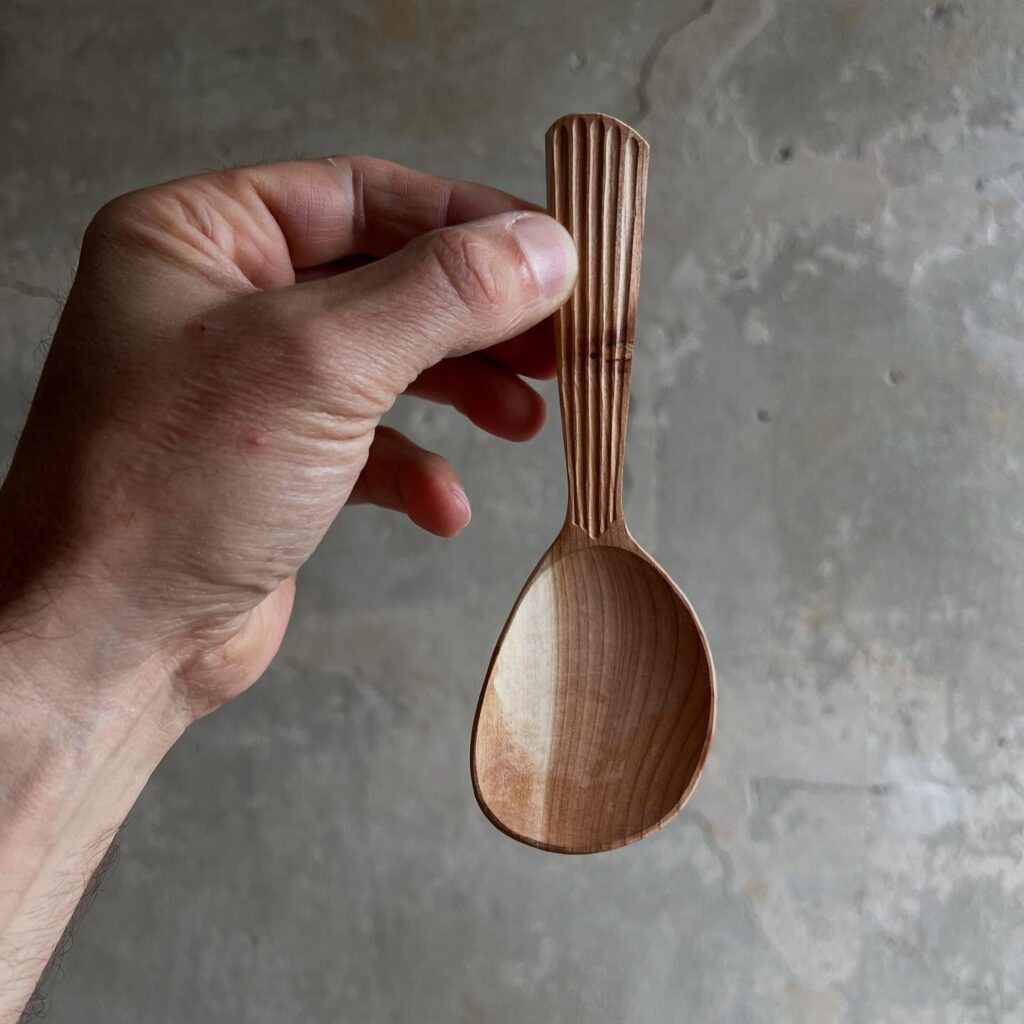
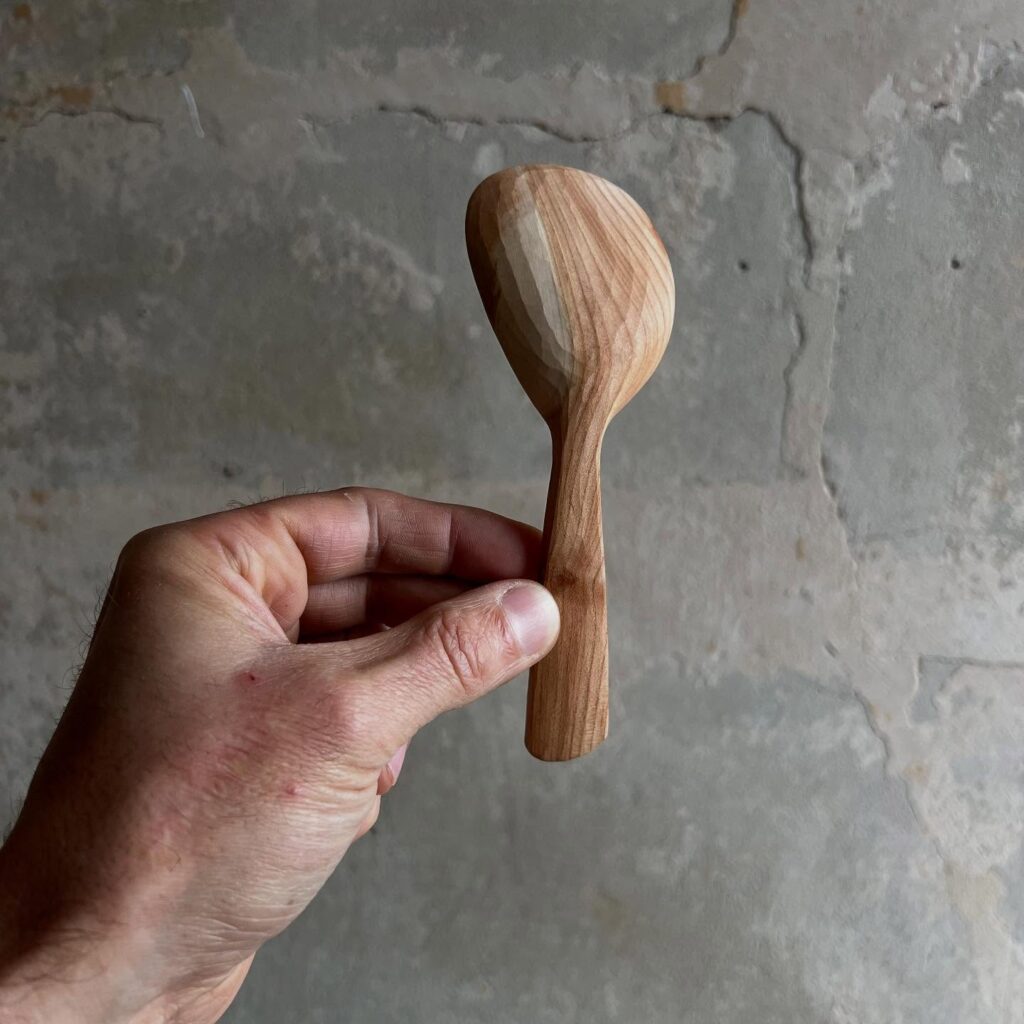
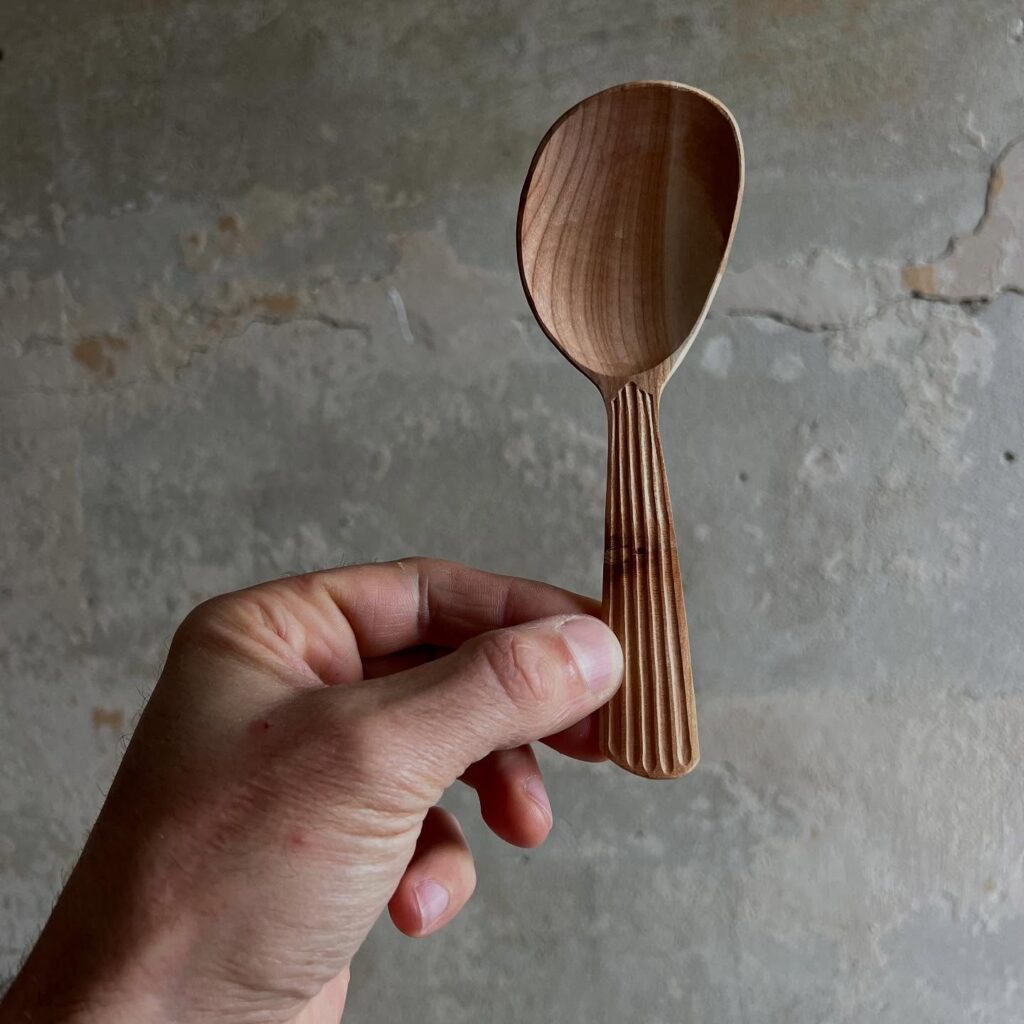
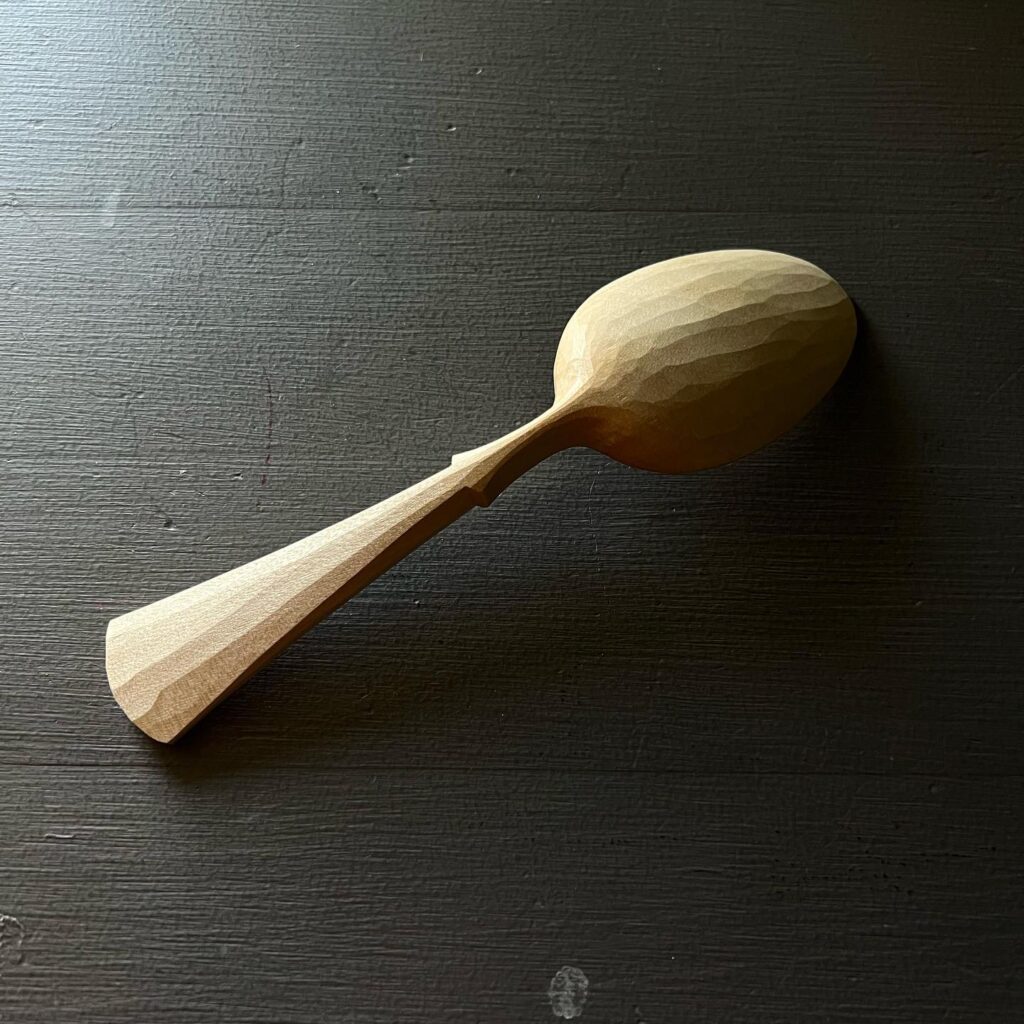
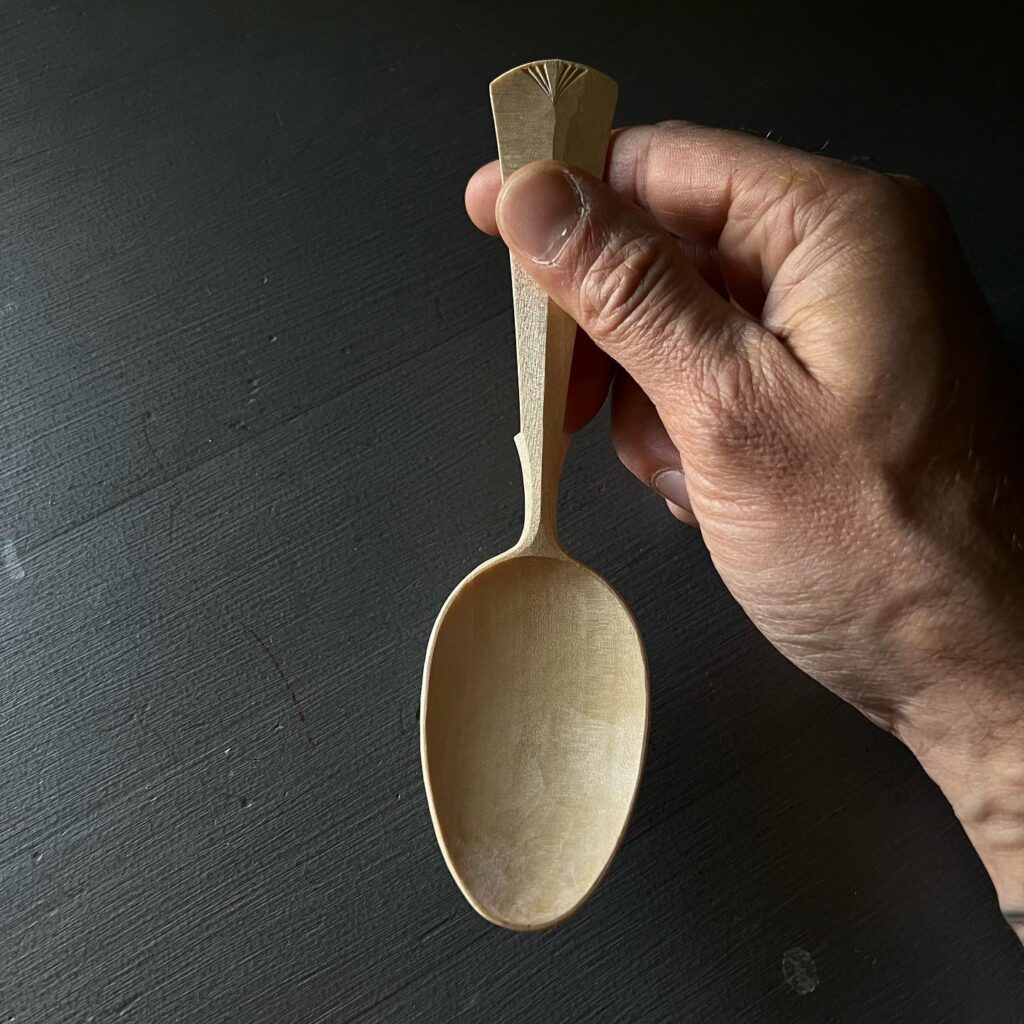
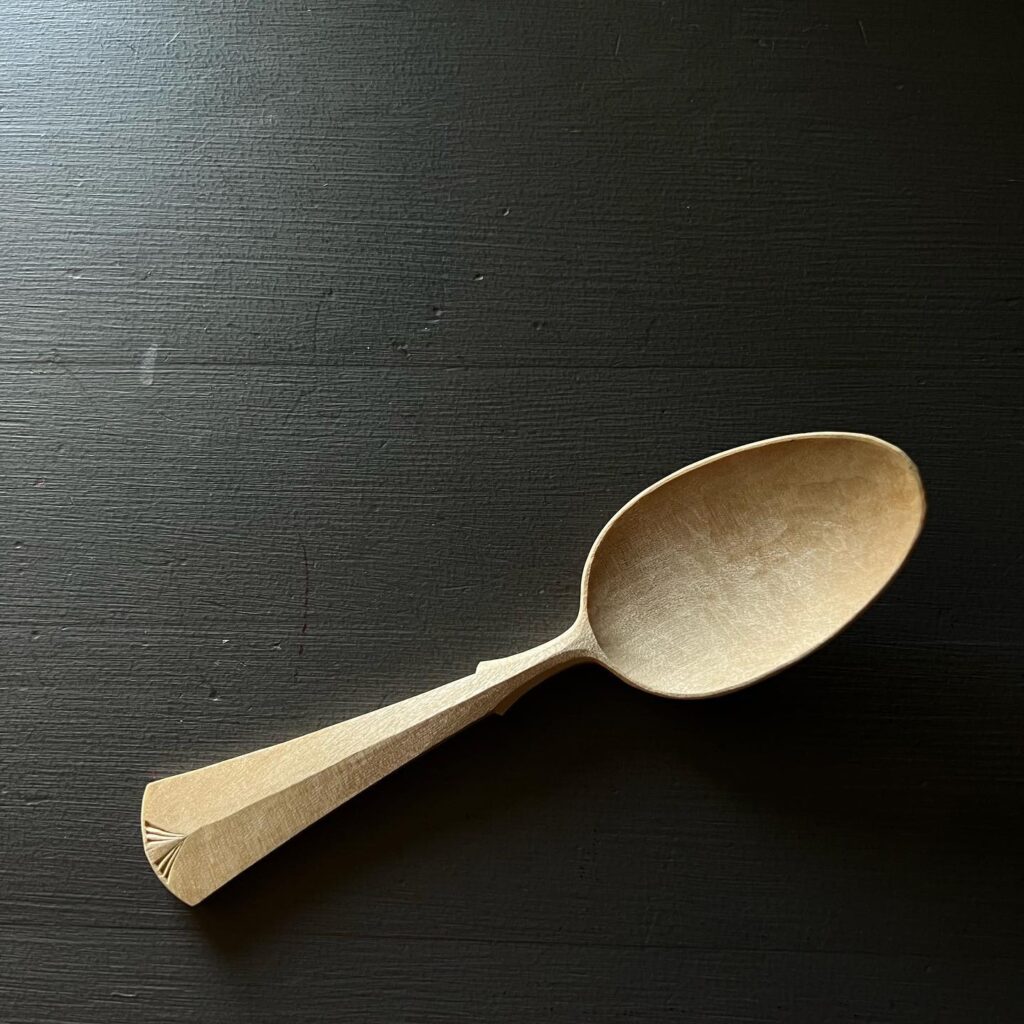
Why Spoon Carving?
Spoon carving has grown in popularity as part of the slow craft movement. Unlike mass-produced utensils, each handmade spoon carries the marks of the maker. Carvers often describe the process as meditative, since shaping a spoon requires focus, patience, and creativity.
For beginners, spoons are an approachable entry point into woodcarving. The project doesn’t require large amounts of material, and the size is manageable. For experienced carvers, spoons provide a canvas for experimenting with patterns, textures, and new techniques.
Design Inspirations
1. The Beauty of Curves
Some spoons abandon the straight handle in favor of playful curves, waves, or zigzags. These designs test the maker’s skill but also add a sculptural quality that makes the spoon stand out. A zigzag handle, for instance, challenges both balance and precision, yet produces a piece that feels like a true conversation starter.
2. Functional Elegance
Not every carved spoon is decorative. Deep soup ladles, long stirring spoons, and flat scoops are reminders that beauty can merge with function. Carving spoons you can actually cook and serve with adds extra meaning, since you use your handmade pieces daily. Hardwoods like maple or cherry make excellent kitchen spoons due to their durability.
3. Decorative Statement Pieces
Some spoons become art. Handles may feature chip carving, textured reliefs, or even pyrography (woodburning). These techniques elevate a simple utensil into something that can be displayed proudly. Collections of carved spoons hung on a wall or placed in ceramic jars can transform a kitchen corner into a rustic gallery.
Check Out This As Well:Beyond the Basics: 12 Creative Carving Ideas to Try Next – If spoons spark your creativity, you’ll love pushing your carving skills into other artistic projects.
4. Whimsical and Playful Shapes
Carvers often push boundaries by making spoons with heart-shaped bowls, extra-long exaggerated handles, or fantasy-inspired motifs. These playful creations highlight the joy of spoon carving and make excellent gifts. They demonstrate that woodcraft doesn’t always have to be serious — it can also be fun and full of character.
5. Nature-Inspired Forms
Many spoons draw inspiration from nature. Leaf-shaped bowls, flowing vine handles, and organic silhouettes bring the outdoors into the design. These spoons feel especially harmonious when finished with natural oils like linseed or beeswax that deepen the wood grain and emphasize its natural patterns.
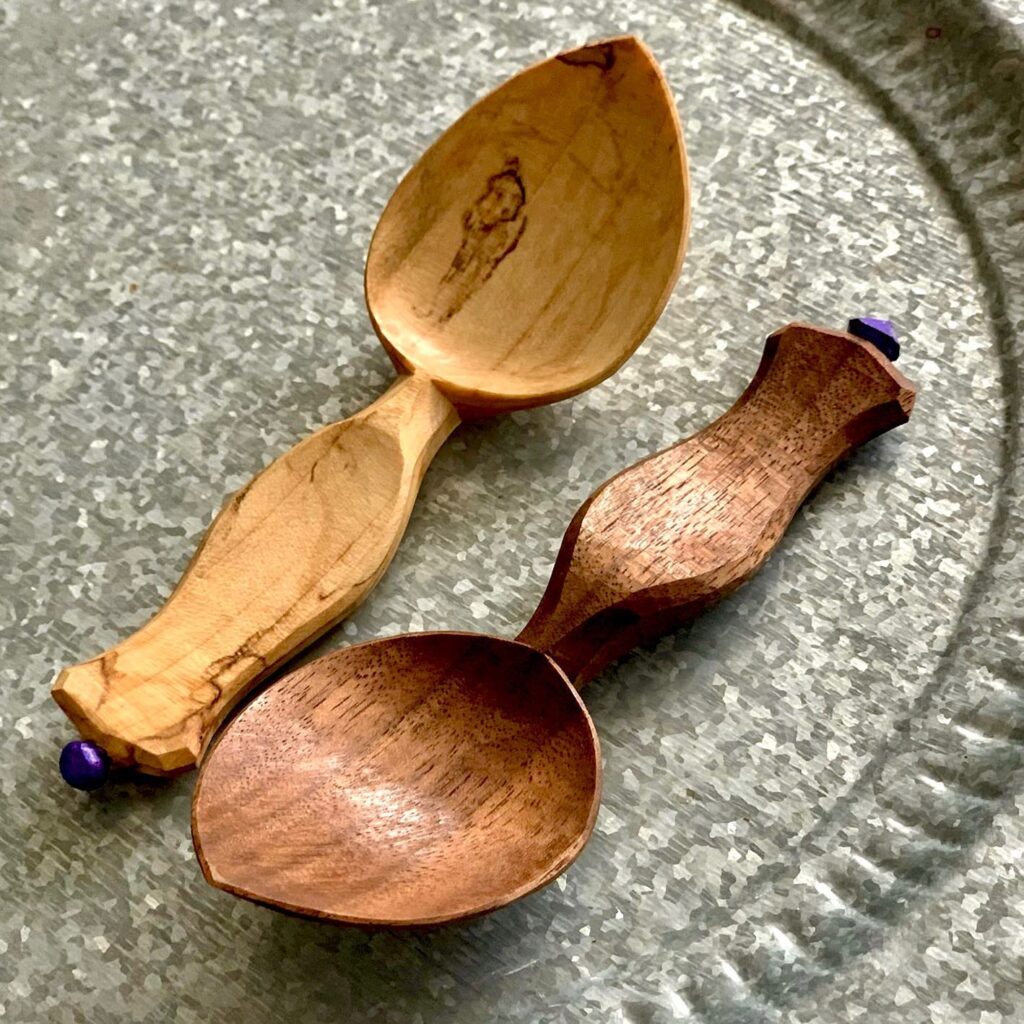
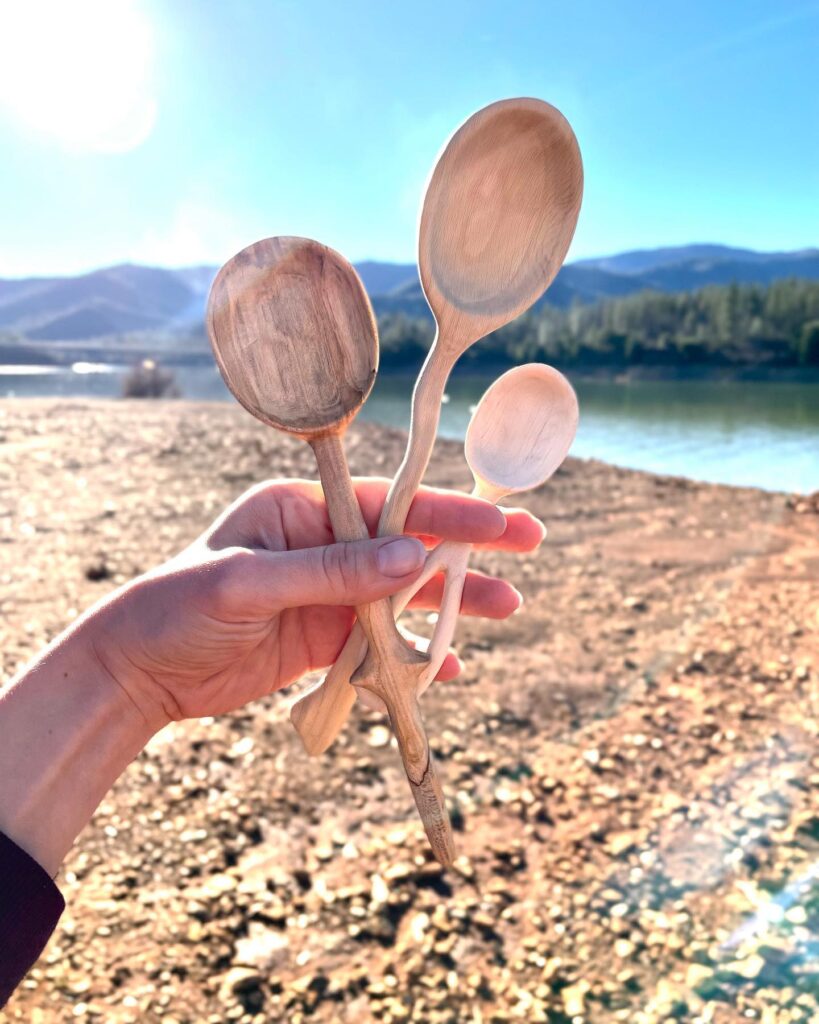
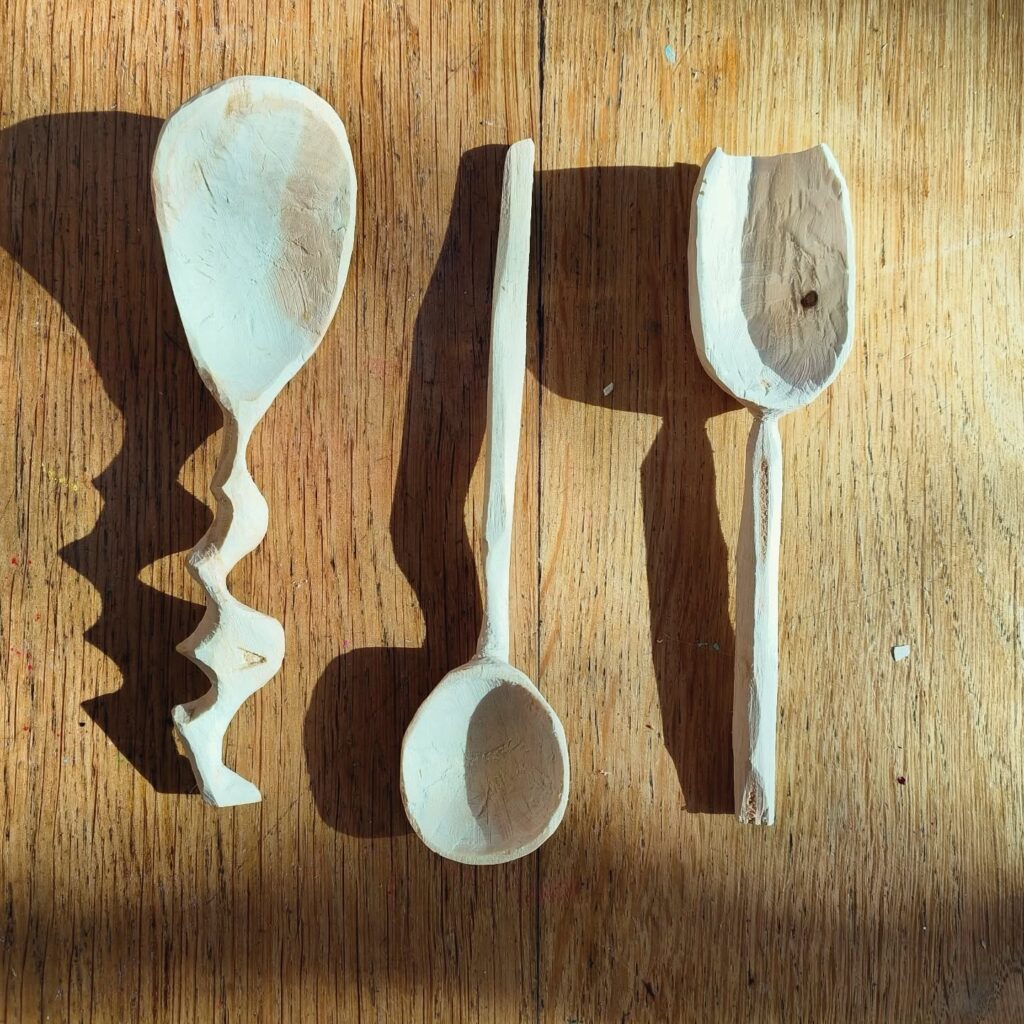
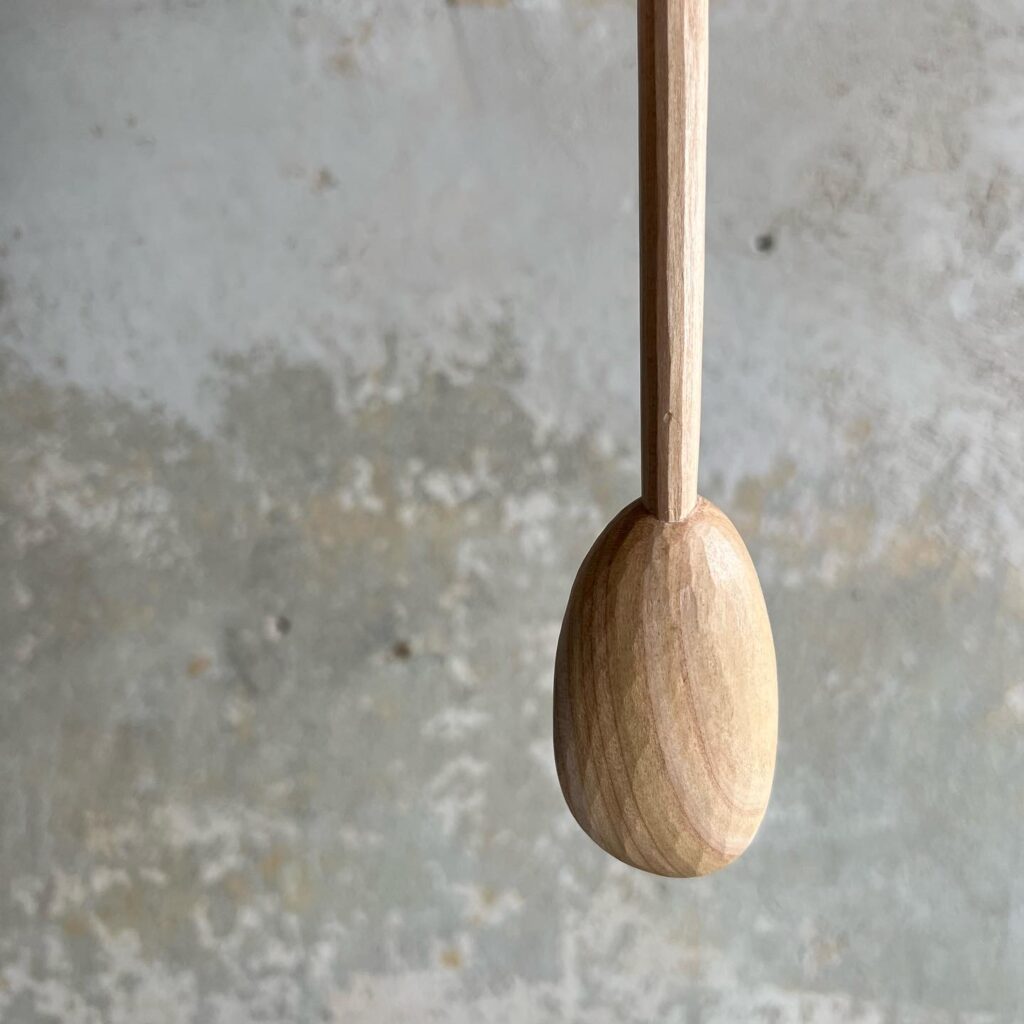
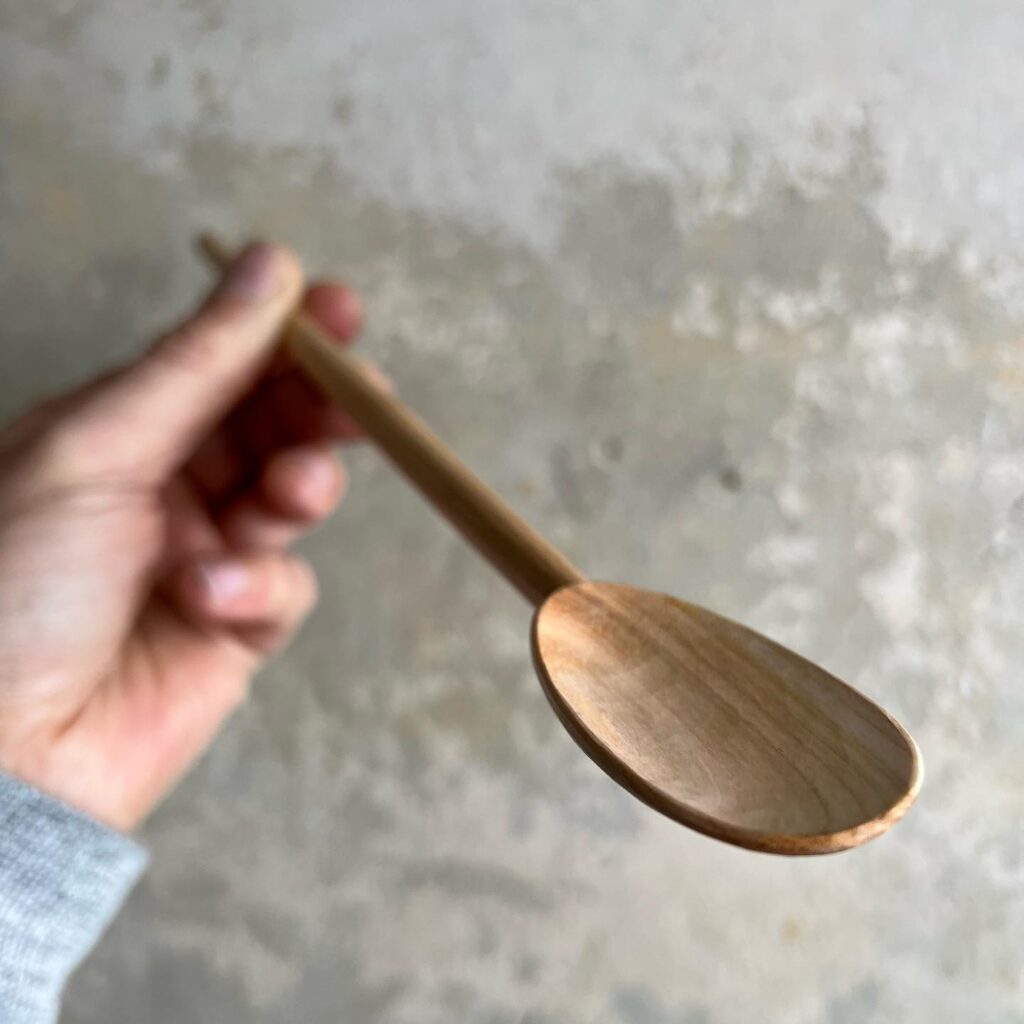
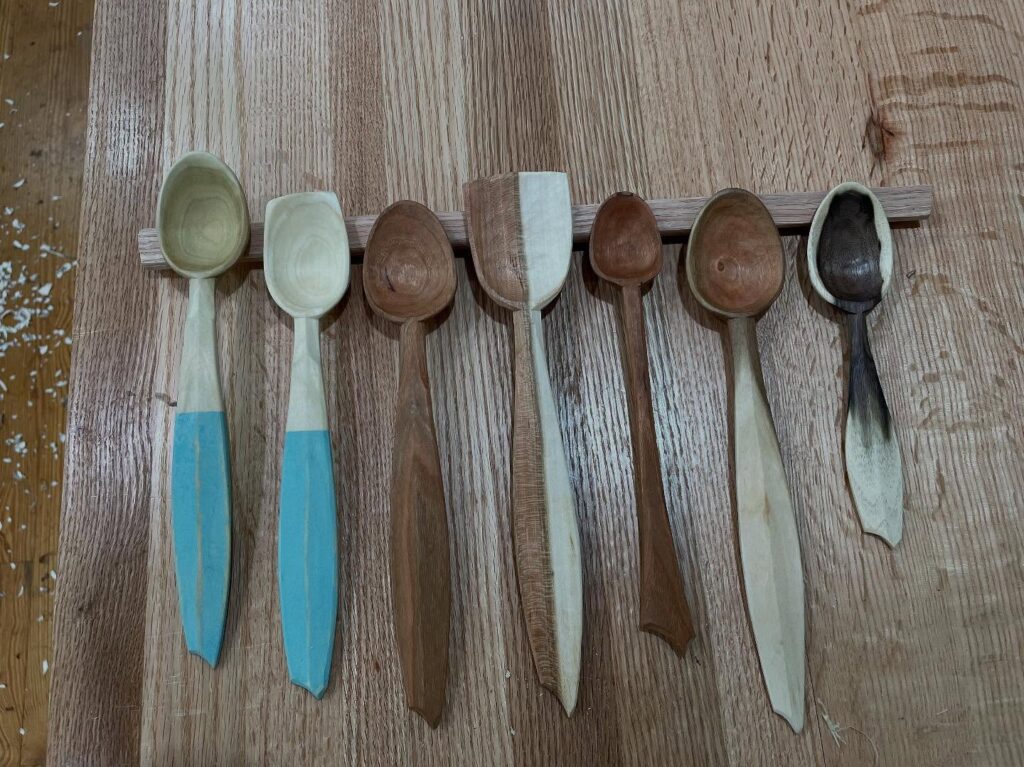
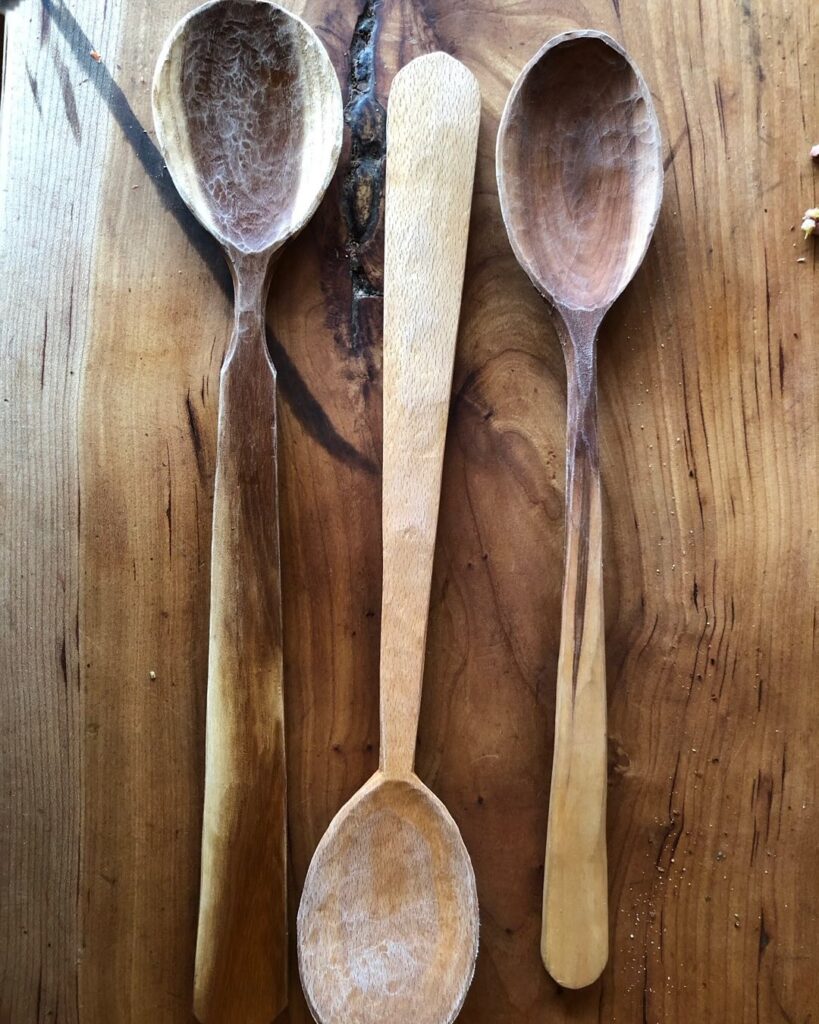
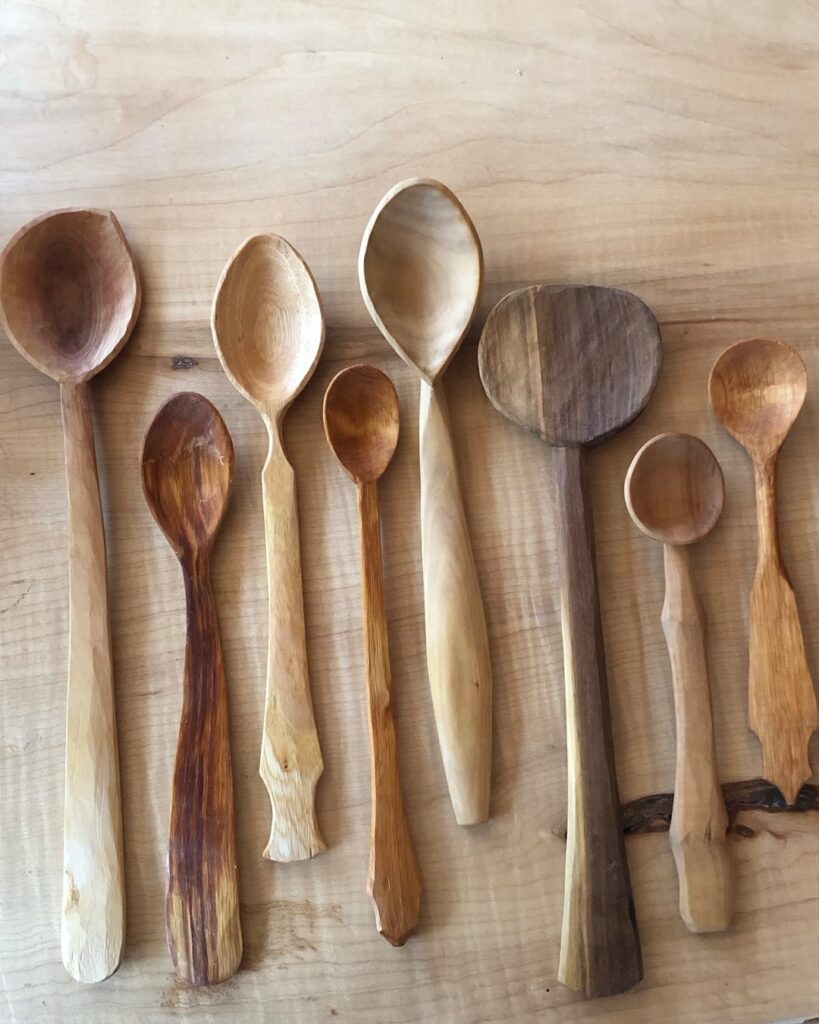
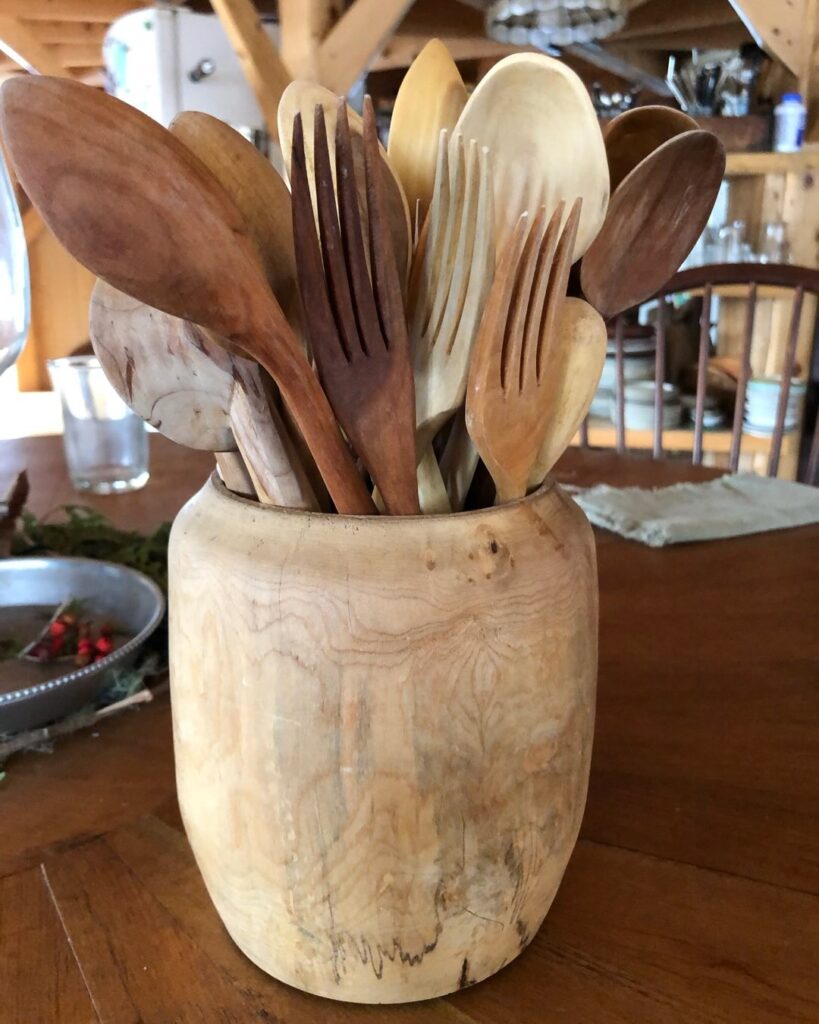
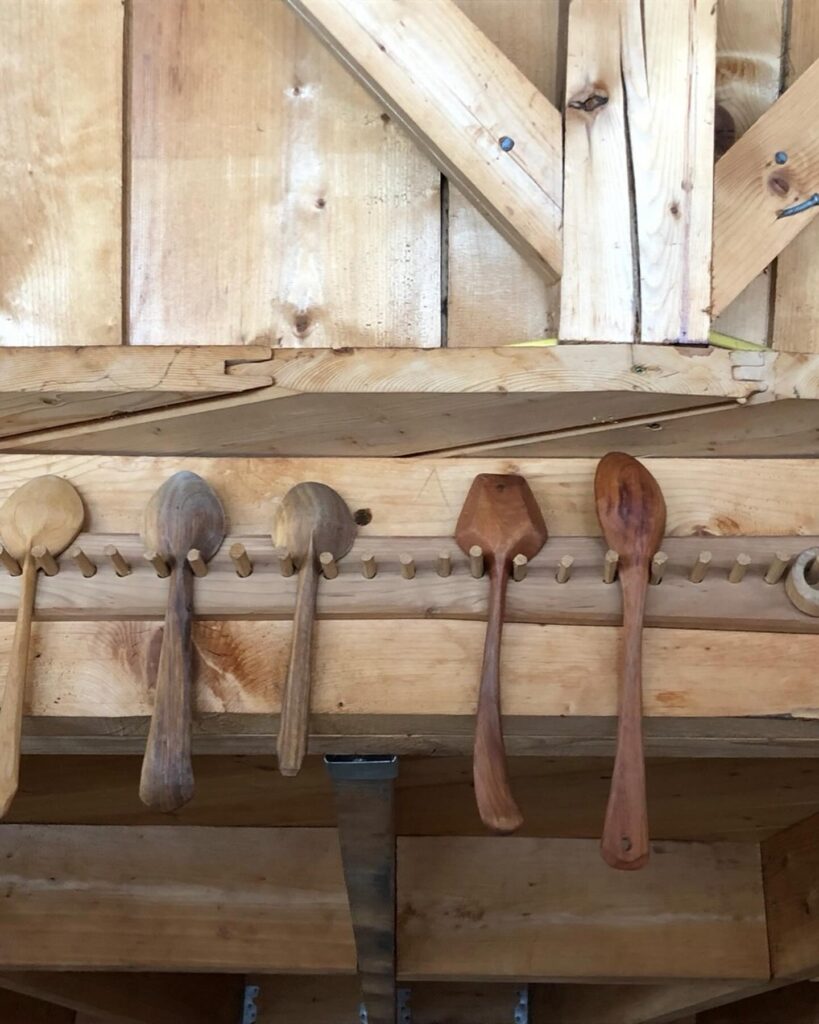
Choosing the Right Wood
The type of wood you choose greatly influences your carving experience and the final spoon’s appearance.
- Softwoods such as pine or cedar are easier to carve but may not hold up as well in daily kitchen use. They are best for practice spoons.
- Hardwoods such as cherry, maple, birch, or walnut are ideal. They balance durability with beautiful grain patterns.
- Fruitwoods like apple, pear, and plum are highly prized among carvers. They offer rich tones and smooth finishes, though they can be harder to carve.
- Exotic woods should be approached with caution. While they may look striking, some contain oils or dust that can be irritating to work with.
Check Out This As Well:Best Woods for Spoon Carving – A detailed guide to help you choose the right wood, whether you’re after durability, color, or grain patterns.
Pro tip: Always use green wood (freshly cut and still moist) if you want a smoother carving experience. Dry wood is harder to work but can be shaped with patience and sharp tools.
Explore More Creative Woodcarving Ideas
- Try simple, relaxing projects from these beginner-friendly carving ideas
- Learn new shapes and cuts with this guide on easy animal carving projects
- Improve your carving workflow with helpful whittling tips
- Discover elegant spoon-making basics in this beginner spoon-carving kit guide
Carving Techniques
Spoon carving may look simple, but mastering the techniques takes practice. Here are a few methods:
- Axe and knife work: Many carvers start by roughing out the spoon’s shape with a hatchet or small carving axe, then refine with a straight carving knife.
- Hook knives: These curved knives are essential for hollowing out the bowl of the spoon. They allow for smooth scoops and rounded interiors.
- Stop cuts and push cuts: These basic carving techniques help control the grain and avoid splitting.
- Texturing: After the basic shape is complete, add details like carved grooves, chip patterns, or decorative notches to personalize your spoon.
Safety is crucial. Always carve away from your body, keep tools razor-sharp, and wear protective gloves if needed.
Check Out This As Well:What Knives Do I Need to Carve a Spoon? – A beginner-friendly breakdown of essential tools so you carve with precision and safety.
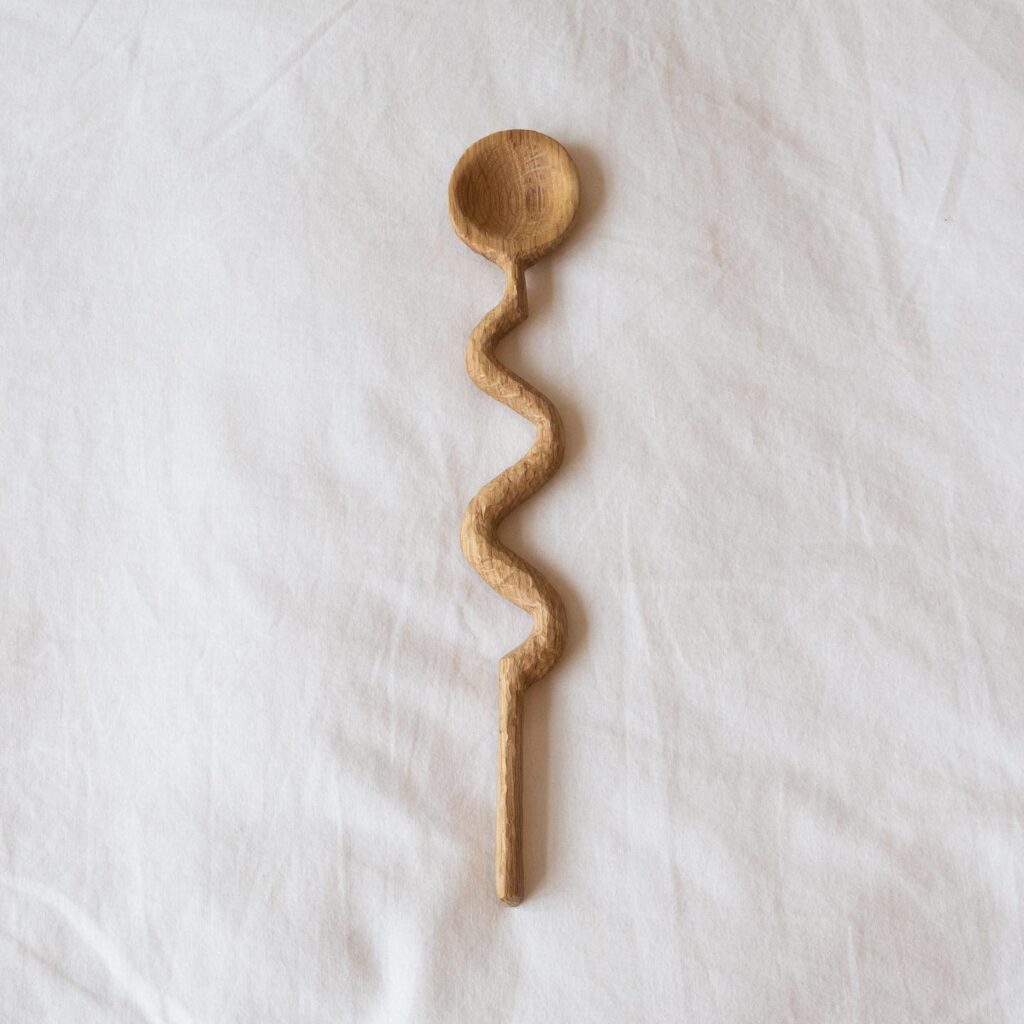
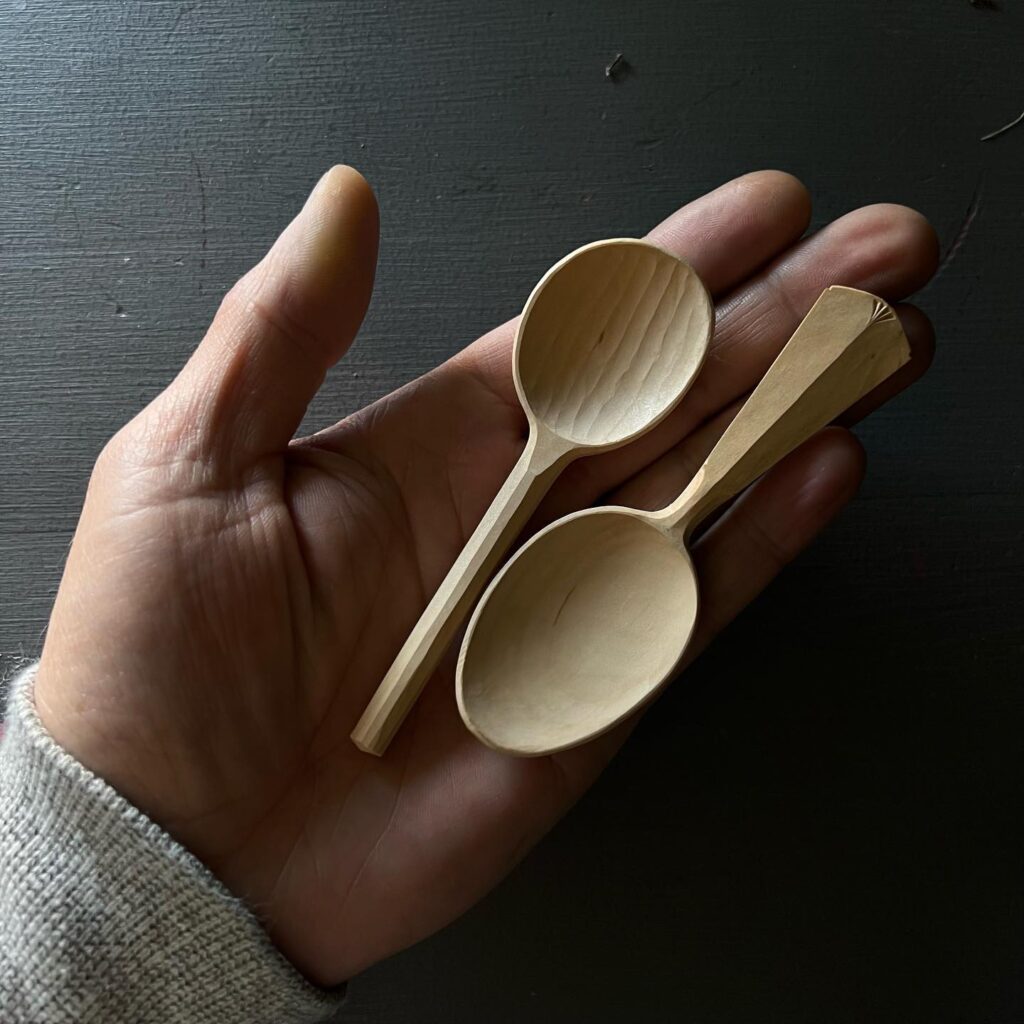
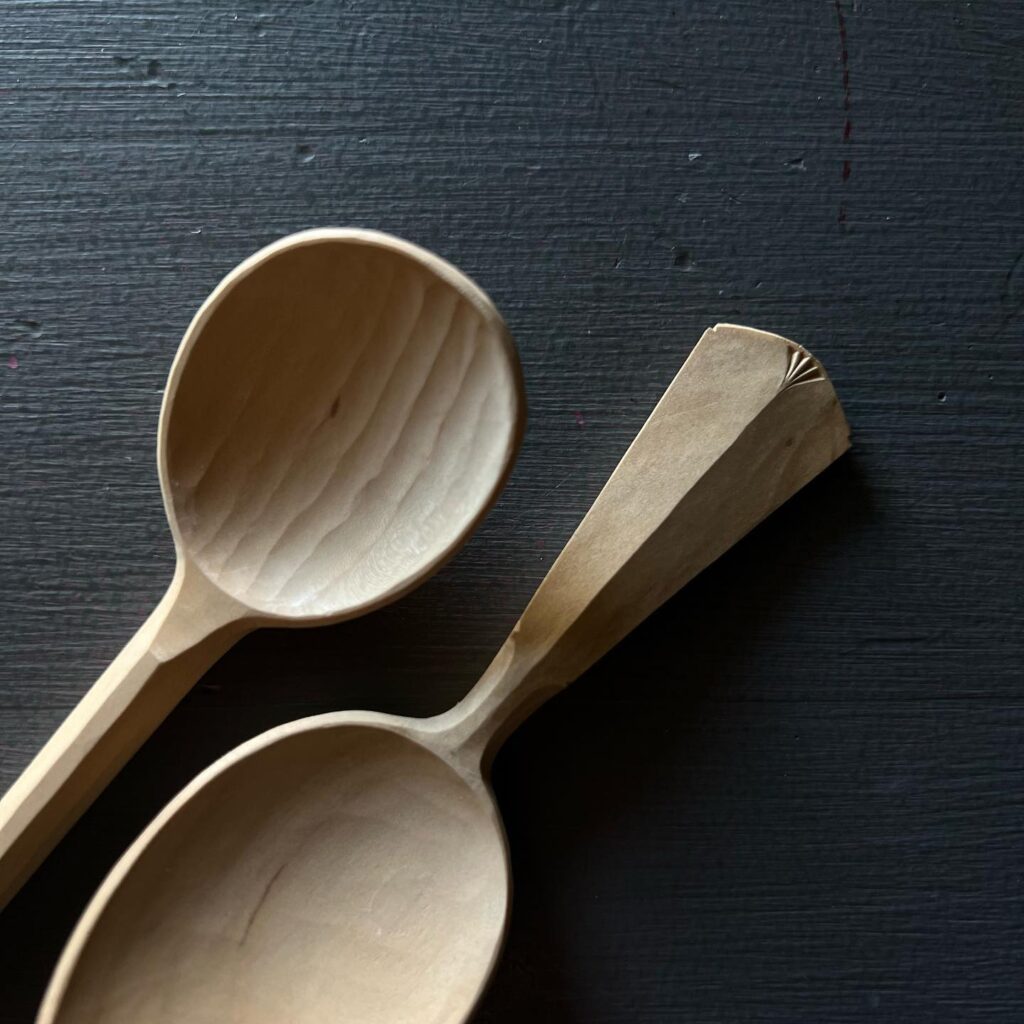
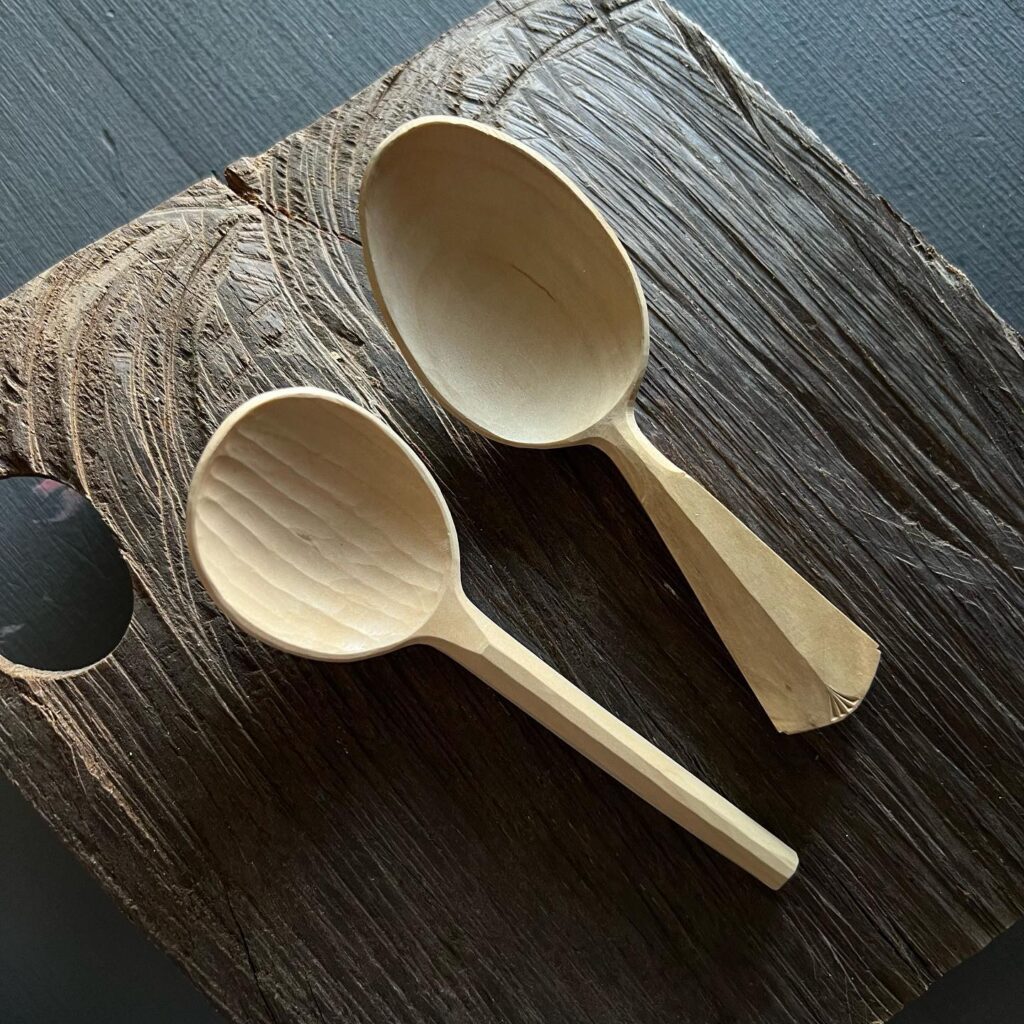
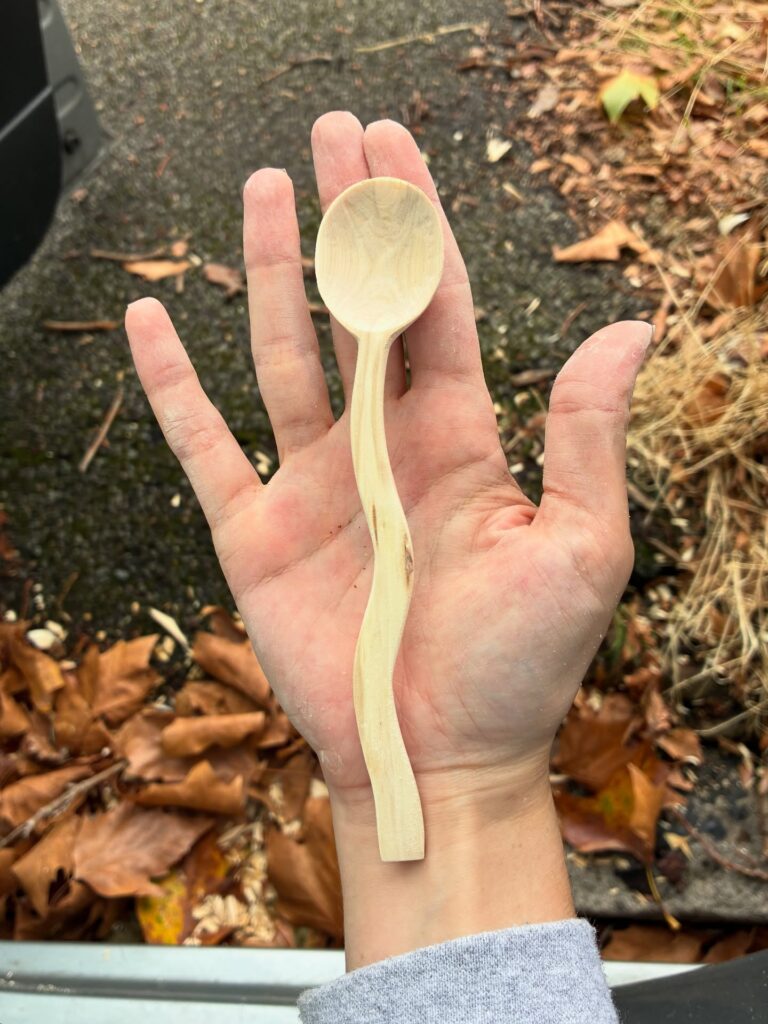
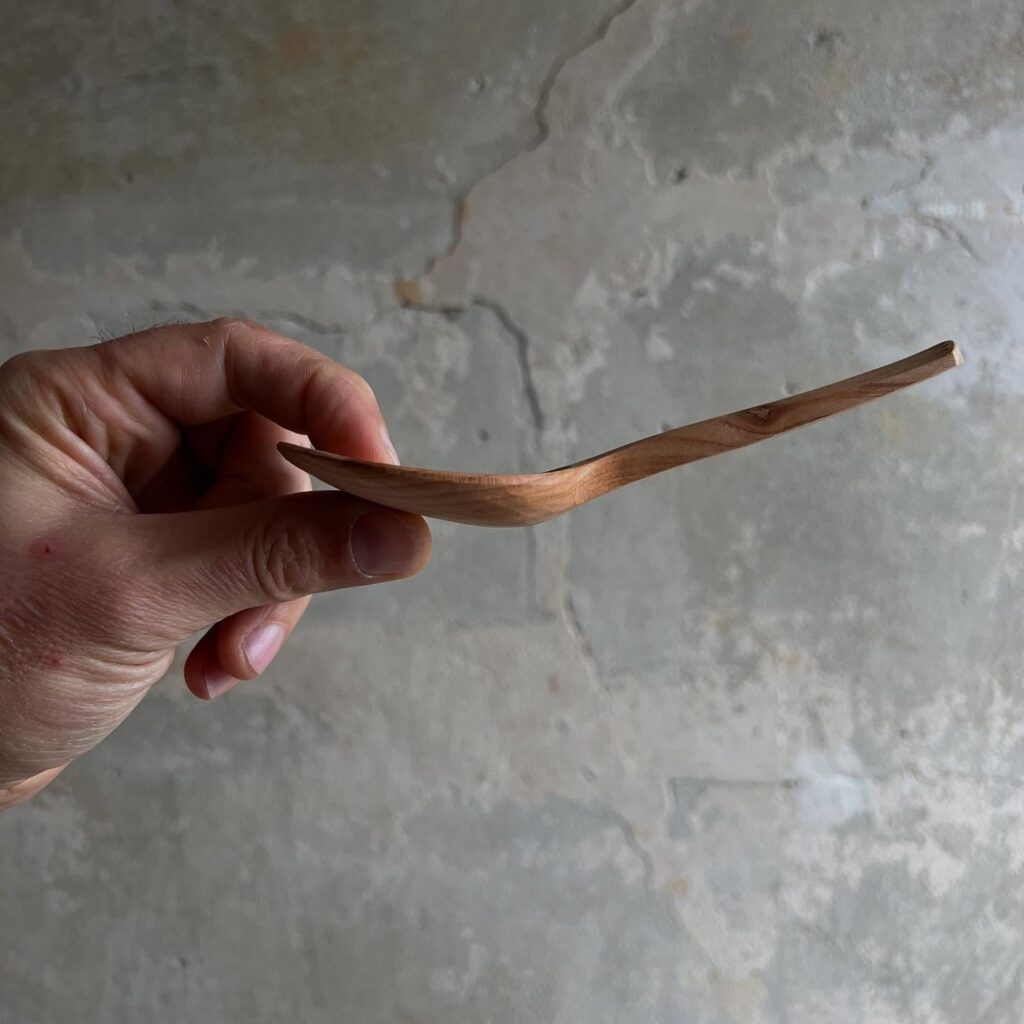
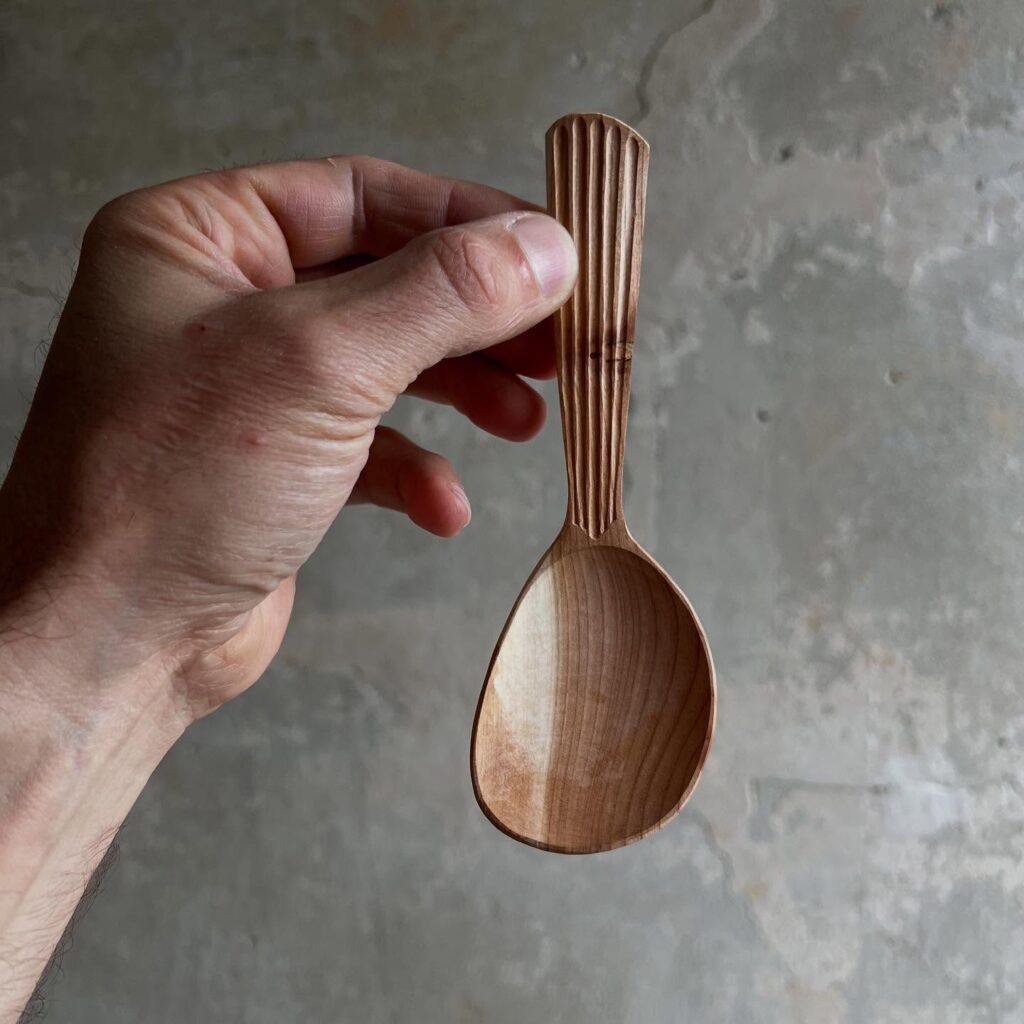
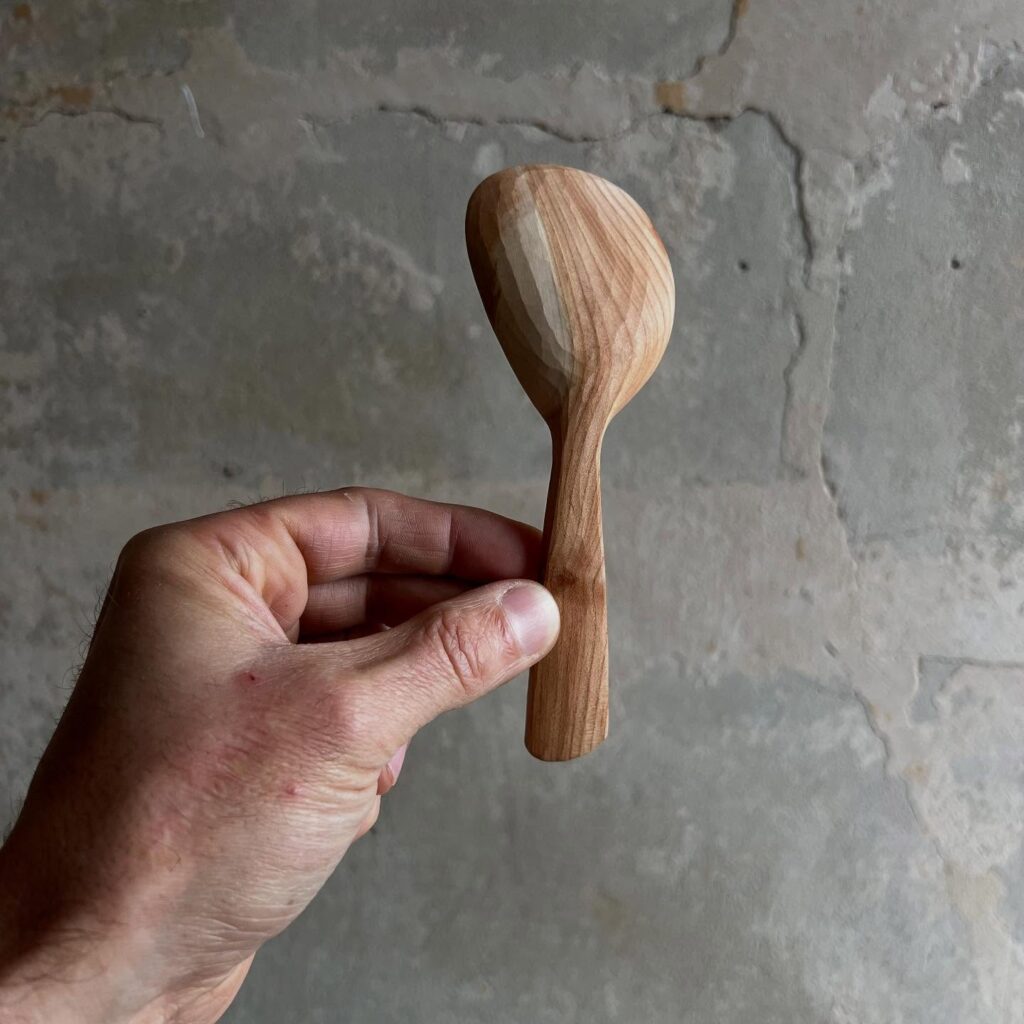
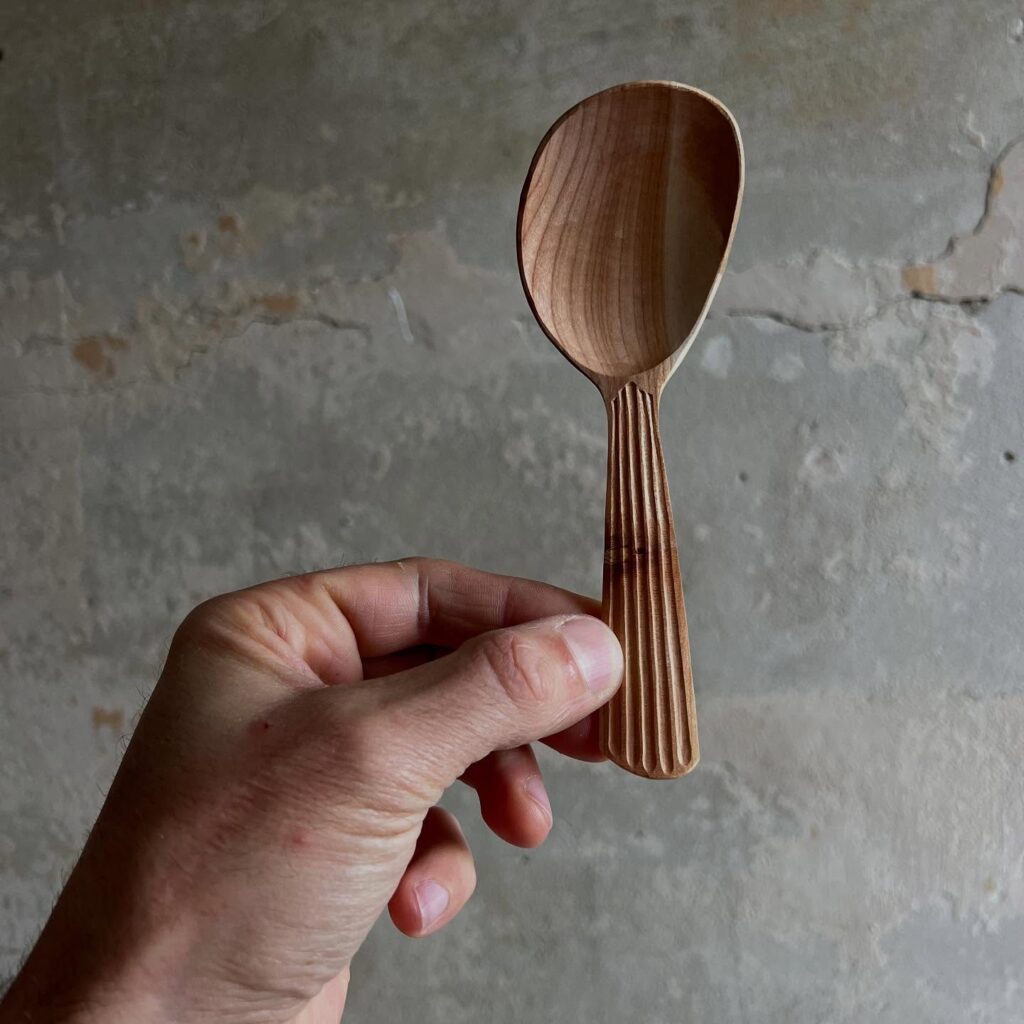
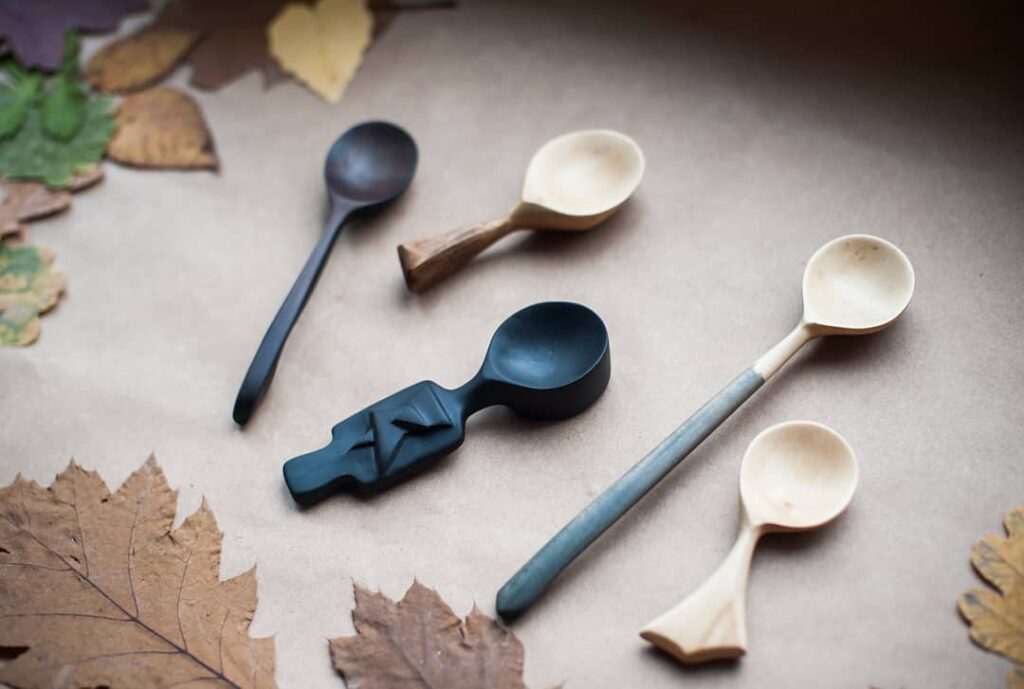
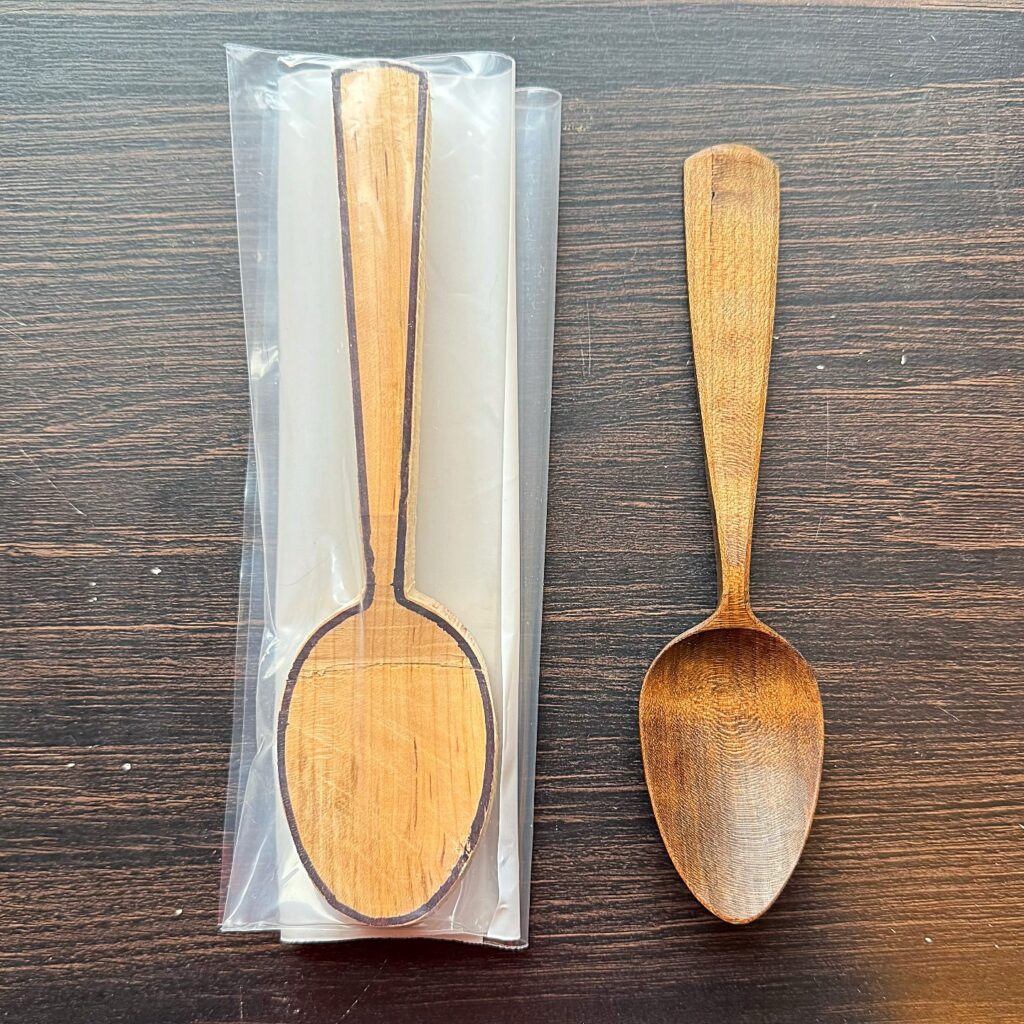
Finishing and Care
Once carved, a spoon requires finishing to protect the wood and enhance its beauty.
- Sanding: Smooth the spoon with progressively finer sandpaper to remove tool marks. Some carvers prefer leaving slight knife marks as a design element.
- Oiling: Food-safe finishes like mineral oil, walnut oil, or a beeswax and oil blend are perfect for kitchen spoons. They bring out the richness of the wood and prevent it from drying out.
- Maintenance: Wash spoons by hand with mild soap and water, never in a dishwasher. Reapply oil periodically to keep the wood nourished.
Check Out This As Well:Finishing Wooden Kitchen Utensils – Learn how to protect your spoons with food-safe finishes that highlight natural beauty.
Tips for Beginners
- Start with simple, straight-handled designs before moving on to more complex curves.
- Practice on softer woods to build confidence before trying hardwoods.
- Learn to read the grain — working with it reduces splitting and makes carving smoother.
- Keep tools sharp. Dull tools are more dangerous and frustrating to use.
- Carve regularly, even small projects, to improve hand control and technique.
Check Out This As Well:30 Weekend Whittling Projects – Simple, satisfying projects you can try once you’re comfortable with spoon carving.
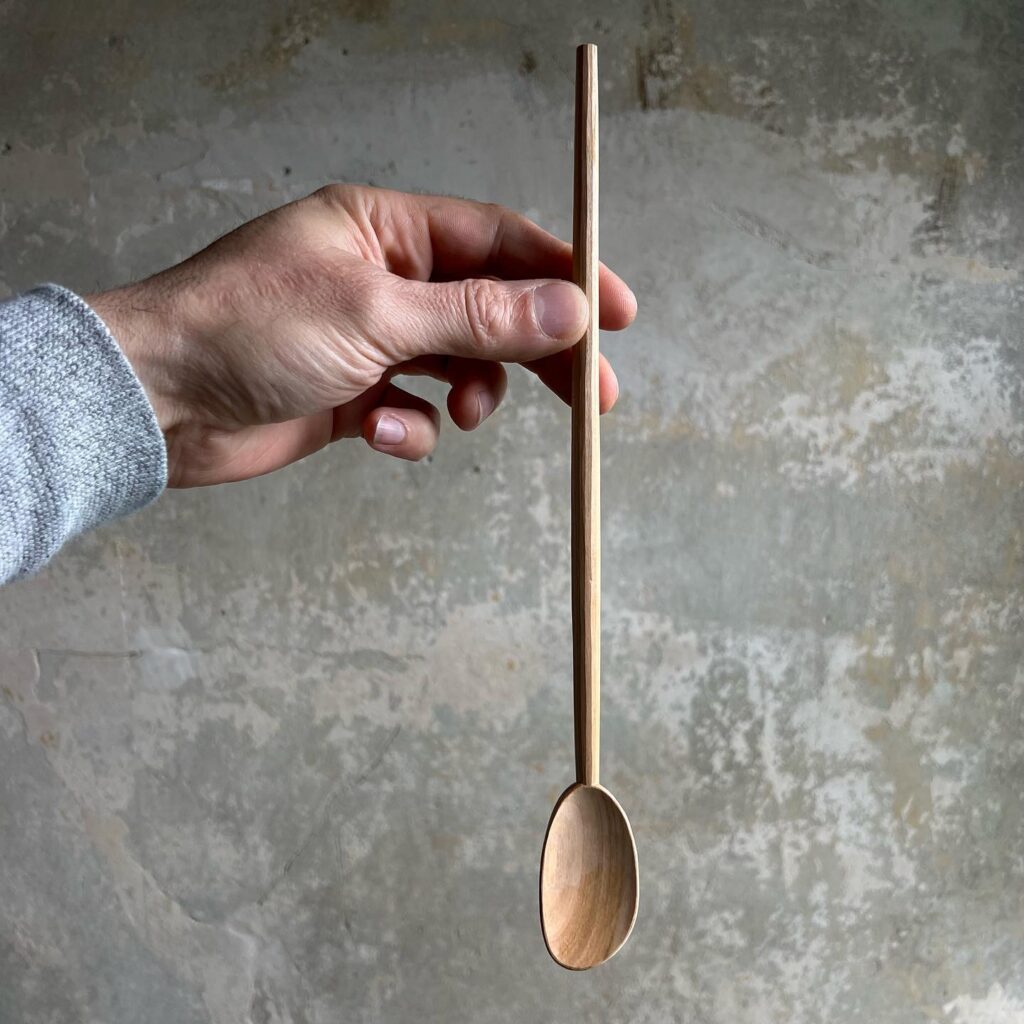
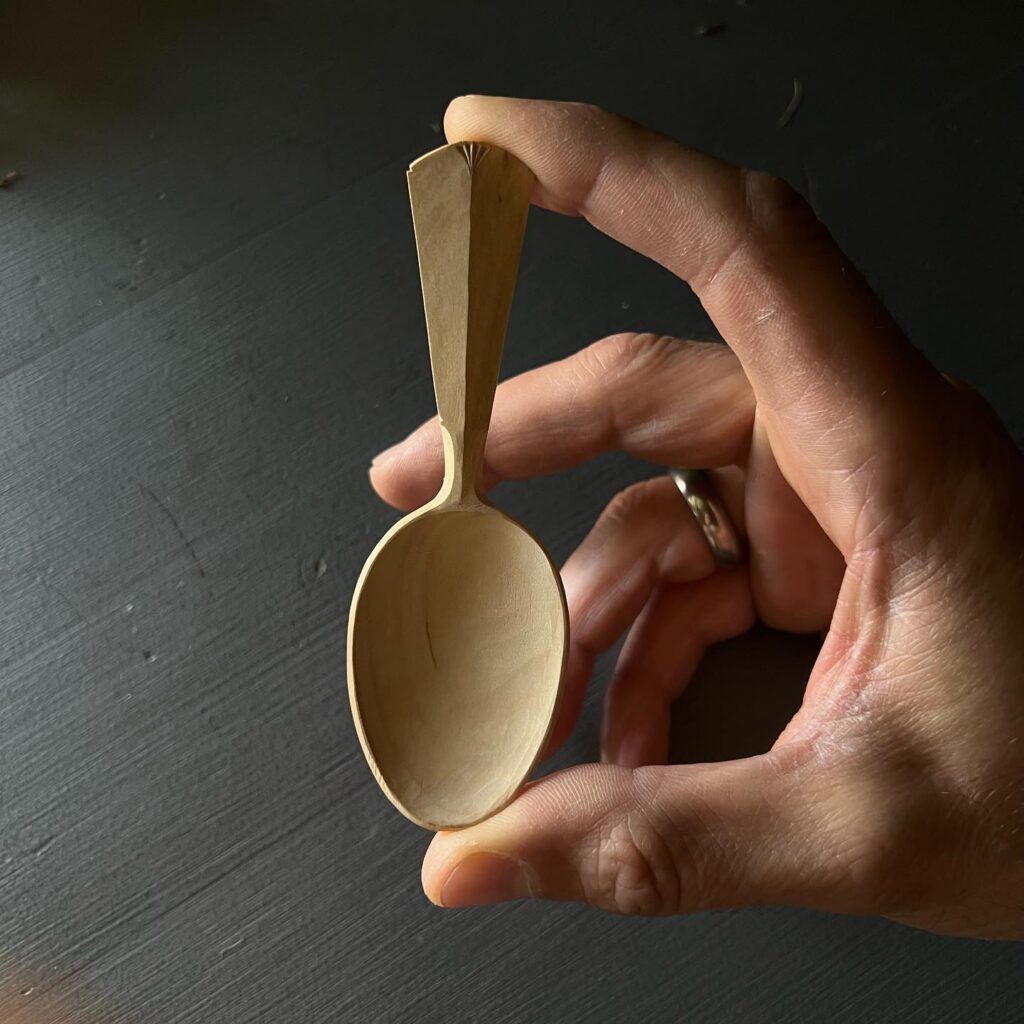
Why Handmade Spoons Matter
Carving spoons is more than making a utensil. Each piece carries the imprint of the maker’s style, skill, and patience. In an age of disposable products, a hand-carved spoon reminds us of craftsmanship, tradition, and the beauty of slow living. Whether displayed, gifted, or used daily in the kitchen, these spoons embody quiet artistry.
Check Out This As Well:Spoon Carving Kit for Beginners – Everything you need in one set to start your carving journey today.
Conclusion
From whimsical zigzag handles to elegant serving scoops, carved spoons showcase the versatility of woodworking. They connect us to tradition while allowing space for creativity and self-expression. Whether you’re a beginner looking for a relaxing hobby or an experienced woodworker pushing design boundaries, spoon carving offers endless possibilities.
So, gather your tools, choose a piece of wood that speaks to you, and start carving. Each spoon you make is not just a utensil — it’s a personal story told through wood.Check Out This As Well:What Knives Do I Need to Carve a Spoon? – A beginner-friendly breakdown of essential tools so you carve with precision and safety.

